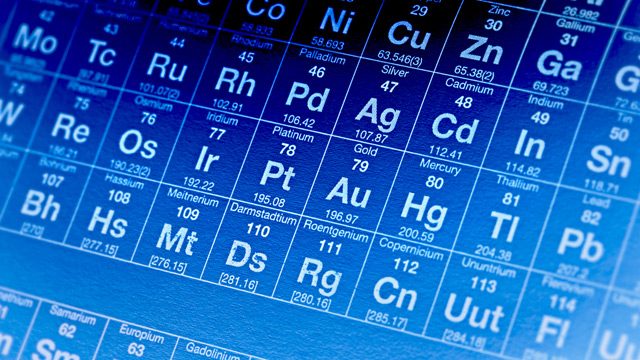SUMMARY
This is AI generated summarization, which may have errors. For context, always refer to the full article.

MANILA, Philippines – Time to replace that periodic table hanging in your chemistry lab.
Four new elements have been officially added to the periodic table of elements, filling the gaps in the 7th row of the chart – and making chemistry textbooks around the world obsolete.
The discovered elements – with atomic numbers 113, 115, 117, and 118 – are now officially verified by the International Union of Pure and Applied Chemistry (IUPAC), the global body responsible for streamlining nomenclature in the scientific field.
All 4 new elements are synthetic elements – they do not occur naturally on Earth and are produced artificially through experiments.
One of the 4 new elements – Element 113 – will be the first on the table to be discovered and named by Asian scientists.
The said element was discovered by a team working at Japan’s Riken Institute, where the element was successfully created 3 times between 2004 and 2012.
“IUPAC has announced that Morita’s group will be given priority for the discovery of the new element, a privilege that includes the right to propose a name for it,” Riken said in a statement.
“I feel grateful that the name will be included in the table for the first time after this recognition,” team leader Kosuke Morita, a professor at Japan’s Kyushu University, said at a press conference on Thursday, December 31.
Elements 115 and 117, meanwhile, were discovered by a team of scientists from the Joint Institute for Nuclear Research in Russia, and the Lawrence Livermore National Laboratory and Oak Ridge National Laboratory in the United States.
The scientists have been collaborating on this discovery since 2010.
The last new element, Element 118, was discovered by another collaboration between Russia’s Joint Institute for Nuclear Research and the US’s Lawrence Livermore National Laboratory.
“[The] Dubna–Livermore collaboration started in 2006 is reported as having satisfied the criteria for discovery of element Z=118,” IUPAC said in a statement Wednesday, December 30.
The new elements have been given the following temporary names and symbols:
- Element 113: ununtrium, Uut
- Element 115: ununpentium, Uup
- Element 117: ununseptium, Uus
- Element 118: ununoctium, Uuo
“The chemistry community is eager to see its most cherished table finally being completed down to the seventh row,” Jan Reedijk, president of IUPAC’s Inorganic Chemistry Division, said in the statement.
The teams who discovered the elements have been given the naming rights, and the IUPAC will then check the proposed names “for consistency, translatability into other languages, possible prior historic use for other cases,” among others.
The scientific body said the names can come from “mythological concept, a mineral, a place or country, a property, or a scientist.”
The final names of the new elements will be decided by the teams within the year. – With reports from Agence France-Presse/Rappler.com
(Periodic table image courtesy Shutterstock)
Add a comment
How does this make you feel?
There are no comments yet. Add your comment to start the conversation.